
Nonresident Hunting Information
For more info – MONTANA
——————————————
As a nonresident, you can apply via Montana’s special drawing for a general license to hunt deer, elk, or deer and elk statewide and according to specific hunting-district regulations. Nonresidents can apply for deer, elk or deer/elk combination licenses online or mail in a paper application (see below).
March 15 is the deadline to apply.
* Apply online
* Print a paper application
If you draw a license, you will be notified in mid-April. Also, if you are successful in obtaining a license, you could then apply for special permits and purchase a bow and arrow license, if you wish to do so. If you do not draw a license, you will receive a refund minus the $5 drawing fee.
The tentative 2008-2009 deer, elk and antelope regulations are posted under Regulations. The FWP Commission will determine the final 2008 deer, elk, and antelope regulations in late February. The final 2008 regulations will be posted on the website in early March. Print copies will be available by late March.
Here is a general summary of nonresident elk and deer hunting license fees:
* Deer combination—$343
* Elk combination—$593
* Big game combination (deer & elk)—$643
* Landowner sponsored—$343
* Youth combination—$324
300 Nonresident Youth Big Game Combination Licenses
will be sold for $324, first‑come, first‑served, beginning
March 1 to nonresident youth who have an adult immediate
family member who possesses a current resident deer or elk
license or a nonresident big game, elk combination or deer
combination license. Applications are available from FWP’s
website and will be processed at the FWP headquarters in
Helena.
Conservation Non-resident $10 -Nonresident prerequisite for all licenses. Includes the state lands license (for hunting, fishing and trapping
Archery $10 – Required for Archery Only Season and/or areas. Specific rules apply to purchase a bow and arrow license.
Hunting Access Enhancement $10 – This is an annual fee and will be charged at the time the hunter purchases his/her first hunting license (including upland and migratory bird).
Big Game Combination (General Elk/Deer) NR$643 -Nonresidents applying for any other combination license may not apply. Includes a conservation, state lands, deer A, and elk license and authorizes fishing and hunting of upland game birds, excluding turkey. 11,500 licenses available. Deadline to apply is March 15.
Big Game Combination – Outfitter Sponsored NR$1500 – Nonresidents applying for any other combination license may not apply. Includes a conservation, state lands, deer , and elk license and authorizes fishing and hunting of upland game birds, excluding turkey. Outfitter certificates should be obtained from your outfitter sponsor. All big game hunting with this license must be done with a licensed outfitter. Issued to all valid applicants sponsored by a certified outfitter received by March 15.
Big Game Combination – Youth NR$324 – Limited to 300 nonresident youths 12-17 years of age who have an adult immediate-family member who possess resident deer or elk license or a nonresident big game elk or deer combination license. First-come, first-served. Application available online.
Deer Combination – General NR$343 – Nonresidents applying for any other combination license may not apply. Includes a conservation, state lands, and deer A license and authorizes fishing and hunting of upland game birds, excluding turkey. 2,300 licenses available. Deadline to apply is March 15.
Deer Combination – Landowner Sponsored NR$343 – Nonresidents applying for any other combination license may not apply. Includes a conservation, state lands, and deer A license and authorizes fishing and hunting of upland game birds, excluding turkey. Landowner certificates should be obtained from your landowner sponsor. 2,000 licenses available. Deadline to apply is March 15.
Deer Combination – Outfitter Sponsored NR$1400 – Nonresidents applying for any other combination license may not apply. Includes a conservation, state lands and deer A license and authorizes fishing and hunting of upland game birds, excluding turkey. Outfitter certificates should be obtained from your outfitter sponsor. All big game hunting with this license must be done with a licensed outfitter. Issued to all valid applicants sponsored by a certified outfitter received by March 15.
Deer B NR$80 – Licenses limited to specific districts. Deadline to apply is June 1.
Deer Permits NR$5 – Must be used with a general Deer A License. Nonresidents must hold a Big Game or Deer Combination License to apply. Deadline to apply is June 1.
Archery season: 5 week period from late Oct to late Nov for rifle, shotgun, muzzy, handgun, crossbow, or archery equip. Proposed 09/01 to 10/09. Was: 09/06 – 10/19.
Deer/Elk backcountry Season: Was: 09/15 – 11/30. New proposed – same as general season
Deer/Elk General Season: Proposed:10/25 – 11/30. Was: 10/26 – 11/30
10% limit on Non-residents
Regulations
- Only one license or permit of any type may be purchased each
year, unless otherwise specified and allowed in the regulations
(i.e., you may purchase more than one deer B license). - Hunting License: A hunting license authorizes the holder
to hunt the species identified on the license according to the
regulation. - Some licenses and permits are valid only in a portion or portions
of a hunting district. Carefully review the legal description of
the district for which you are applying.
Types of Licenses and Permits: All licenses and permits that
can be used in a hunting district are listed in the regulations for
that hunting district. Licenses and permits that can be used in
a hunting district are grouped by license/permit type (general,
special license, special permit, 2nd antlerless elk, etc.) and
whether they are available for purchase from FWP License
Providers or through the special drawing only.
• Conservation License: Prerequisite for all resident and
nonresident licenses. Includes the state lands recreation
license (for hunting, fishing and trapping purposes).
• General License: Resident general licenses may be purchased
from any License Provider, including online at fwp.mt.gov. They
are available to all residents and may be used throughout the
state according to the regulations. Nonresidents may apply
for/purchase general licenses specified for nonresidents in the
Licenses Available Chart. Please refer to the hunting district
regulations to see how, when and where a general license
may be used in each hunting district or portion of a hunting
district.
• Deer A License – The deer A license is Montana’s general
deer‑hunting license valid for one deer. Hunters may
purchase only one deer A license. It can be used as indicated
under the “General Deer A License” heading on the Deer
& Elk Hunting Districts pages of these regulations.
• Deer B license – valid for one deer during a specific time
period, or for a certain species and sex, and in a particular
hunting district or group of districts. May be offered through
a special drawing or over‑the‑counter.
Special License: Special licenses are generally available
through the Special Drawing. It allows you to hunt in an
otherwise restricted area or time period, usually for a specific
sex and age class of animal. A special license generally (but
not always) allows you to harvest an additional animal over and
above the one you may harvest with your general license.
Special Deer or Elk Permit: The permit must be used with a
specific hunting license. A permit is not a second license and
does not allow the holder to kill an additional animal. Rather,
it expands the opportunity to hunt for a species in a particular
hunting district.
Special Licenses and Permits:
- You may apply for a special permit and/or license that allows you to hunt in an otherwise restricted area or time period. You may also decide to participate in the bonus point system.
- Nonresidents must hold a Big Game Elk/Deer or Deer Combination License before applying for a special deer permit.
- Nonresident holders of a Landowner‑Sponsored Deer Combination License are reminded that the license (including B licenses) entitles them to hunt deer only on the deeded lands of the sponsoring landowner. This license may not be used on lleased or public land. However, the license is valid statewide for fishing and hunting upland game birds.
- Nonresident holders of a Landowner‑Sponsored Deer Combination License may apply for a special deer permit or deer B license only in the hunting district where they are authorized to hunt deer.
- Applications for deer, elk and/or antelope special licenses and permits must be postmarked by the U.S. Postal Service on or before June 1. Hunters may apply online no later than June 1 for special permits/licenses for deer, elk, and antelope.
Bonus Point System: The fee to participate in the voluntarybonus‑point system is $2 for Montana residents and $20 for nonresidents, payable with the license and application fees. You must pay the participation fee when applying to use or gain bonus points. When participating in the bonus point system, here’s how it works:
• Applicants accumulate one bonus point for each unsuccessful
year. Each bonus point essentially becomes an extra chance
in future drawings. For example, applicants would have one
chance to be drawn the first year they apply. If unsuccessful,
they would have two chances to be drawn the following year
and three chances the next year, and so on until they received
the license. Once successful, the applicant loses all bonus
points for that species.
• Bonus points are accumulated independently for each species
and only apply to “first–choice” districts. An applicant may
skip two consecutive years of participation without forfeiting
accumulated points, but if an applicant skips the third year—or
has errors that eliminate the applicant from the drawing—all
accumulated points for that species will be lost. There is an
exemption for Montana residents with full‑time active military
status.
• Rejection of an application because of applicant error is
equivalent to failure to apply.
• Points are non‑transferable.
• Applicants cannot apply just for a bonus point. You must
apply correctly for the license and be unsuccessful to get a
bonus point.
• Bonus points are not used or lost in 2nd or 3rd choice
drawings.
• FWP will contact bonus‑point participants each year by
postcard to report their accumulated points. Bonus‑point status
is also available online. It will be the applicant’s responsibility
to report AND provide proof of any discrepancies.
The number of bonus points applicable to applicants applying as
a party is the total number of bonus points held by the members
of the party, divided by the number of applicants in the party,
then rounded to the nearest whole number. When two or more
persons apply as a party and choose to participate in the bonus
point system, all party members must pay the bonus point fee.
If one or more party members do not pay the bonus point fee,
but the other members pay the fee, those who have not paid
the fee will be taken out of the party and one of the following
shall occur:
• If one individual is removed from the party, that person is
entered into the drawing as an individual applicant.
• If two or more individuals are removed from a party, these
individuals are entered into the drawing as a separate party.
All nonresidents who are unsuccessful in the nonresident
combination license drawing are mailed a form that must be
returned if they wish to accumulate bonus points for special
deer and elk permits. If you did not receive this form and wish
to participate in the bonus point system, please contact FWP at
406‑444‑2950.
Fees and Refunds: In addition to the cost of each permit or
license, there is a $5 nonrefundable drawing fee for each license
or permit you apply for. The $5 fee covers the cost of printing
and processing the application.
Party Applications: For a few special drawings, two or more
applicants may apply as a “party.” If you apply as a party, each
party member must list the identical license/permit choices in the
identical order on his/her application. If one or more party member
does not pay the bonus point fee, but the other members pay
the fee, those who have not paid the fee will be taken out of the
party. It is unlawful to loan or transfer a license to another or to
use a license issued to another.
Either everyone in the party is successful in obtaining a license
or everyone is unsuccessful. A party of individuals is assigned
one random number in the computer. If that number is drawn,
each member of the party receives a permit/license.
Deer B Licenses: A deer B license is usually a license for
antlerless mule deer or white‑tailed deer, depending on the license
type and hunting district. The deer B license allows you to kill a
deer in addition to the deer you could harvest with your deer A
license. There is no particular order in which the A and B licenses
must be purchased or used. Most deer B licenses are available
through the June 1 special drawing but some are available for
purchase at License Providers, including FWP Online Licensing.
A hunter may only possess a total of seven Deer B licenses in
any combination.
Single-Region Antlerless Mule Deer B Licenses:
• Check the hunting district in which you will hunt for specific
regulations and valid dates for the single‑region license.
Resident
• Region 7: 007‑13. All Region 7 HDs. Not valid on CMR
refuge.
• Region 7: 007‑14. 2nd MD B License. All Region 7 HDs. Not
valid on CMR refuge.
x
Special Deer Permits
• Hunters who receive a special deer permit must use it with a
current deer A license. A deer permit does not allow you to take
a second deer.
• Hunters who receive a special deer permit valid for taking an
antlered buck mule deer (with their deer A license) are restricted
to taking an antlered buck mule deer only in the district or portion
of district specified on the permit. They may not hunt antlered
buck mule deer anywhere else in Montana even if the General
Season or Archery Only Season is open to mule deer buck
hunting with a deer A license. This applies to all special deer
permit areas, whether limited or unlimited, for antlered buck
mule deer.
• The following special deer permits are available through the
June 1 special drawing to Residents and/or Nonresidents. Be
sure to check individual hunting district regulations for specific
special deer permit details.
Mule Deer permits
• R1 100‑60 103‑60 104‑60 121‑60 122‑60
123‑60 130‑50
• R2 202‑50 204‑40 210‑50 240‑40 250‑40
261‑50 270‑50 281‑40 291‑50 291‑51
292‑40
• R3 300‑50 312‑50 318‑40 319‑40 324‑50
335‑40 339‑40 343‑40 380‑40 390‑40
391‑40 392‑40
• R4 441‑50 455‑70
• R5 510‑40 530‑50
• R6 652‑50
Deer Permits –
2006 Drawing Statistics
LPT – Apps – Suc – % Suc
—————————
100-60 32 32 100
103-60 58 58 100
104-60 17 17 100
121-60 21 21 100
122-60 18 18 100
123-60 3 3 100
130-50 151 10 6.62
202-50 426 200 46.95
204-40 203 203 100
210-50 617 100 16.21
240-40 139 139 100
250-40 117 117 100
261-50 563 25 4.44
270-50 5820 100 1.72
281-40 397 397 100
291-50 727 100 13.76
291-51 71 25 35.21
292-40 707 707 100
300-50 857 40 4.67
312-50 927 125 13.48
318-40 196 196 100
319-40 251 251 100
324-50 551 50 9.07
335-40 378 378 100
339-40 373 373 100
343-40 456 456 100
380-40 1156 1156 100
390-40 96 96 100
391-40 418 418 100
392-40 758 758 100
441-50 904 50 5.53
455-70 740 50 6.76
510-40 308 308 100
530-50 536 536 100
652-50 878 100 11.39
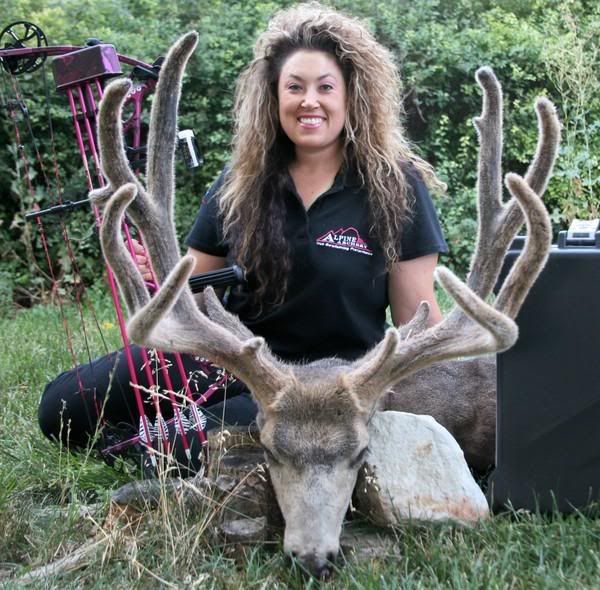
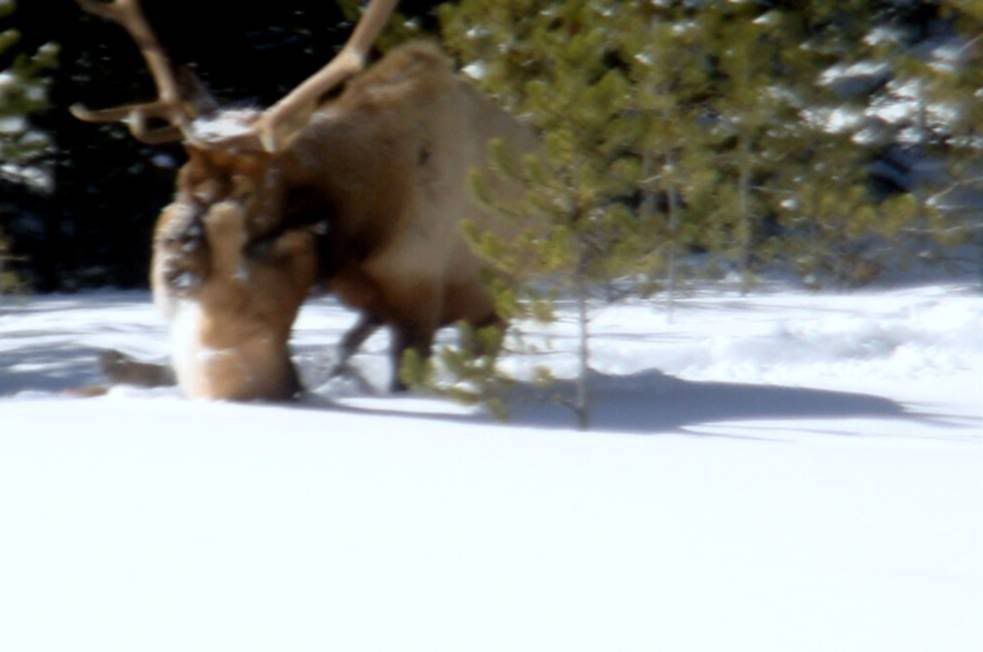
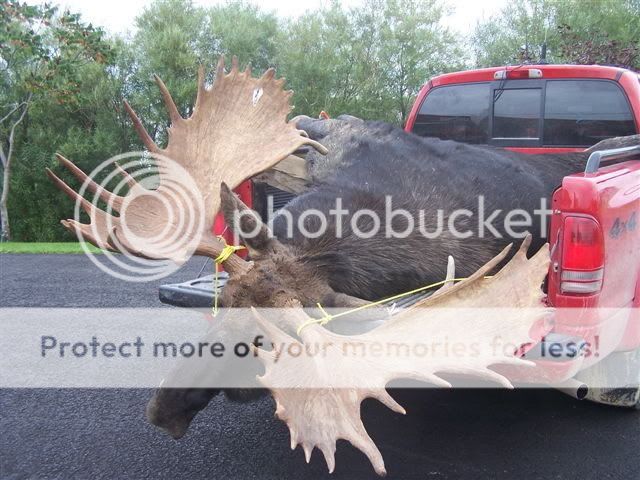


 In the last 25 years, Utah’s elk herd has mushroomed. This phenomenon has coincided with the decline of mule deer populations, hence, there are numerous persons and groups trying to determine if there is a relationship between increasing elk and decreasing mule deer. Thirty years ago, Utah’s few elk were primarily in the North. Today, Northern Utah possibly has the least elk in the state. Overall, the elk population has increased more than 10-fold.
In the last 25 years, Utah’s elk herd has mushroomed. This phenomenon has coincided with the decline of mule deer populations, hence, there are numerous persons and groups trying to determine if there is a relationship between increasing elk and decreasing mule deer. Thirty years ago, Utah’s few elk were primarily in the North. Today, Northern Utah possibly has the least elk in the state. Overall, the elk population has increased more than 10-fold.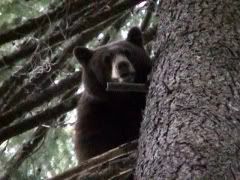 black bears, allowing predator numbers to stay at maximum while mule deer numbers remain perpetually dismal. A Utah Forest Ranger told me that, in the three year period, preceding 2003, there had been 89 black bears released between the Idaho border and the Monte Cristo highway (Rich, Cache, and Weber counties), most of which were troublesome bears removed from Yellowstone.
black bears, allowing predator numbers to stay at maximum while mule deer numbers remain perpetually dismal. A Utah Forest Ranger told me that, in the three year period, preceding 2003, there had been 89 black bears released between the Idaho border and the Monte Cristo highway (Rich, Cache, and Weber counties), most of which were troublesome bears removed from Yellowstone.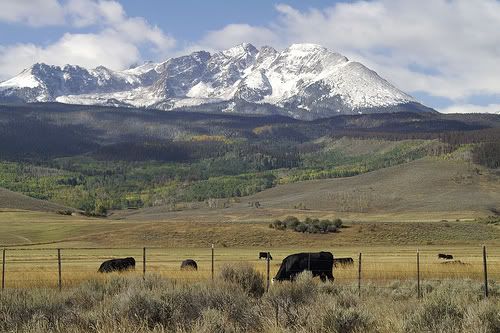 In the last twenty years, there has been a serious decline in ranching and farming in Northern Utah. This has negatively impacted mule deer both in reduced predator control and in reduced grazing which means less quality deer browse. Forest management has never been worse in terms of sustaining or creating habitat for mule deer. Forest Service personnel seem to be interested in only one type of forest – climax forest, which is not good for wildlife and which maintains a tinder box for fire. In the last two decades, southern Utah has had more favorable conditions for mule deer than Northern Utah. Moreover, Southern Utah has fewer hunters. Most of Southern Utah has remained rural. Ranching is still fairly common in Southern Utah, and predator control is still important to ranchers. There is also virtually unlimited winter habitat for most Southern Utah deer.
In the last twenty years, there has been a serious decline in ranching and farming in Northern Utah. This has negatively impacted mule deer both in reduced predator control and in reduced grazing which means less quality deer browse. Forest management has never been worse in terms of sustaining or creating habitat for mule deer. Forest Service personnel seem to be interested in only one type of forest – climax forest, which is not good for wildlife and which maintains a tinder box for fire. In the last two decades, southern Utah has had more favorable conditions for mule deer than Northern Utah. Moreover, Southern Utah has fewer hunters. Most of Southern Utah has remained rural. Ranching is still fairly common in Southern Utah, and predator control is still important to ranchers. There is also virtually unlimited winter habitat for most Southern Utah deer.

 “The Fish and Wildlife Service’s acceptance of Wyoming’s wolf plan is an encouraging sign that wolves in our state will soon be removed from the Endangered Species List, and that Wyoming will be able to manage wolves on its own terms,” said Wyoming Governor Dave Freudenthal. “It has been a long and difficult road, and in our discussions we have achieved compromise on issues like the dual classification and the state’s ability to manage wolves in relation to their impact on elk and deer. I salute Wyoming Game and Fish Director Terry Cleveland and his staff for their hard work in developing the management plan. What remains, in terms of process, is for the feds to delist wolves by Feb. 28 of next year.”
“The Fish and Wildlife Service’s acceptance of Wyoming’s wolf plan is an encouraging sign that wolves in our state will soon be removed from the Endangered Species List, and that Wyoming will be able to manage wolves on its own terms,” said Wyoming Governor Dave Freudenthal. “It has been a long and difficult road, and in our discussions we have achieved compromise on issues like the dual classification and the state’s ability to manage wolves in relation to their impact on elk and deer. I salute Wyoming Game and Fish Director Terry Cleveland and his staff for their hard work in developing the management plan. What remains, in terms of process, is for the feds to delist wolves by Feb. 28 of next year.”